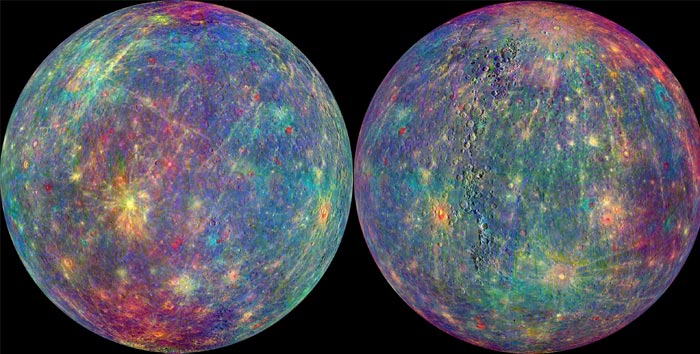Stunning pictures of Mercury released by NASA’s Messenger spacecraft
Messenger rocketed away from Cape Canaveral, Florida, in August 2004. It flew twice past Venus and three times past Mercury, before entering orbit around Mercury in March 2011.
Updated: April 30, 2015 14:34 IST 1 / 5
1 / 5The Mercury Atmosphere and Surface Composition Spectrometer (MASCS) instrument aboard NASA's MESSENGER spacecraft was designed to study both the exosphere and surface of the planet Mercury. (Source: NASA)
 2 / 5
2 / 5The Messenger spacecraft is the first ever to orbit the planet Mercury, and the spacecraft's seven scientific instruments and radio science investigation are unravelling the history and evolution of the solar system's innermost planet. (Source: NASA)
 3 / 5
3 / 5This colour image, taken on May 1, 2013 by the Wide Angle Camera (WAC) instrument aboard in the spacecraft orbiting Mercury, features Hovnatanian crater, named for Armenian painter Hakop Hovnatanian. (Source: NASA)
 4 / 5
4 / 5The bright floor of the crater Lermontov, first imaged by Mariner 10, stands in contrast to the surrounding terrain of Mercury. The large depressions found in the floor have been interpreted as evidence for explosive volcanism, providing insight into Mercury's volcanic history. (Source: NASA)
 5 / 5
5 / 5This colourful scene of Tyagaraja crater and its surroundings contains many different types of material. The very bright areas on the floor of the crater are hollows, and are so much brighter than the surrounding areas that they appear saturated in this particular image (whose "stretch" optimizes the appearance of the darker material). (Source: NASA)











